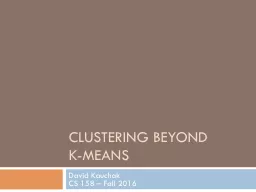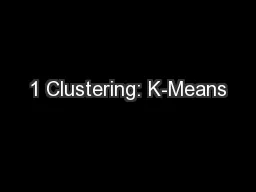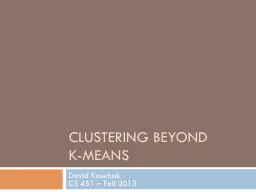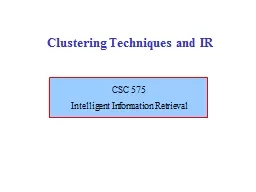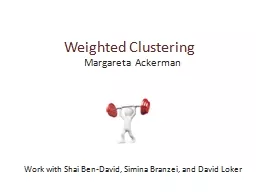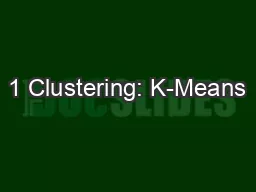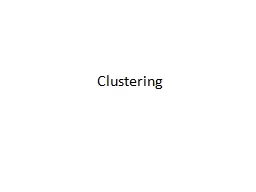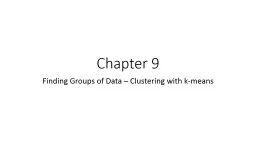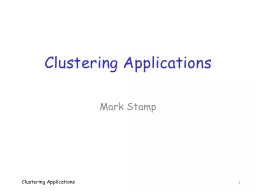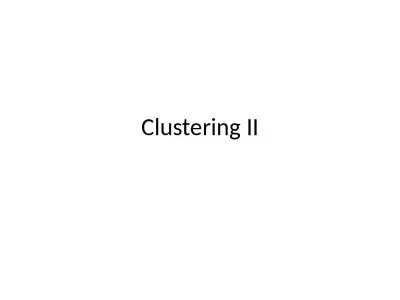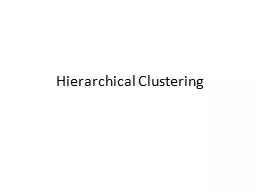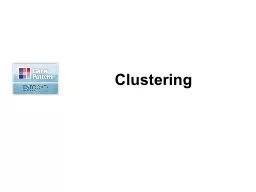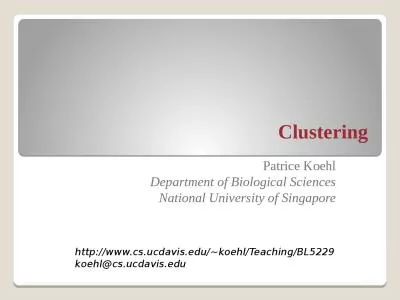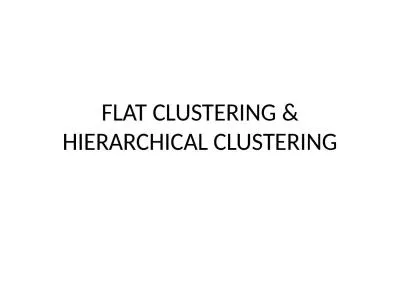PPT-Clustering Beyond K -means
Author : phoebe-click | Published Date : 2018-02-22
David Kauchak CS 158 Fall 2016 Administrative Final project Presentations on Tuesday 4 minute max 2 3 slides Email me by 9am on Tuesday What problem
Presentation Embed Code
Download Presentation
Download Presentation The PPT/PDF document "Clustering Beyond K -means" is the property of its rightful owner. Permission is granted to download and print the materials on this website for personal, non-commercial use only, and to display it on your personal computer provided you do not modify the materials and that you retain all copyright notices contained in the materials. By downloading content from our website, you accept the terms of this agreement.
Clustering Beyond K -means: Transcript
Download Rules Of Document
"Clustering Beyond K -means"The content belongs to its owner. You may download and print it for personal use, without modification, and keep all copyright notices. By downloading, you agree to these terms.
Related Documents

